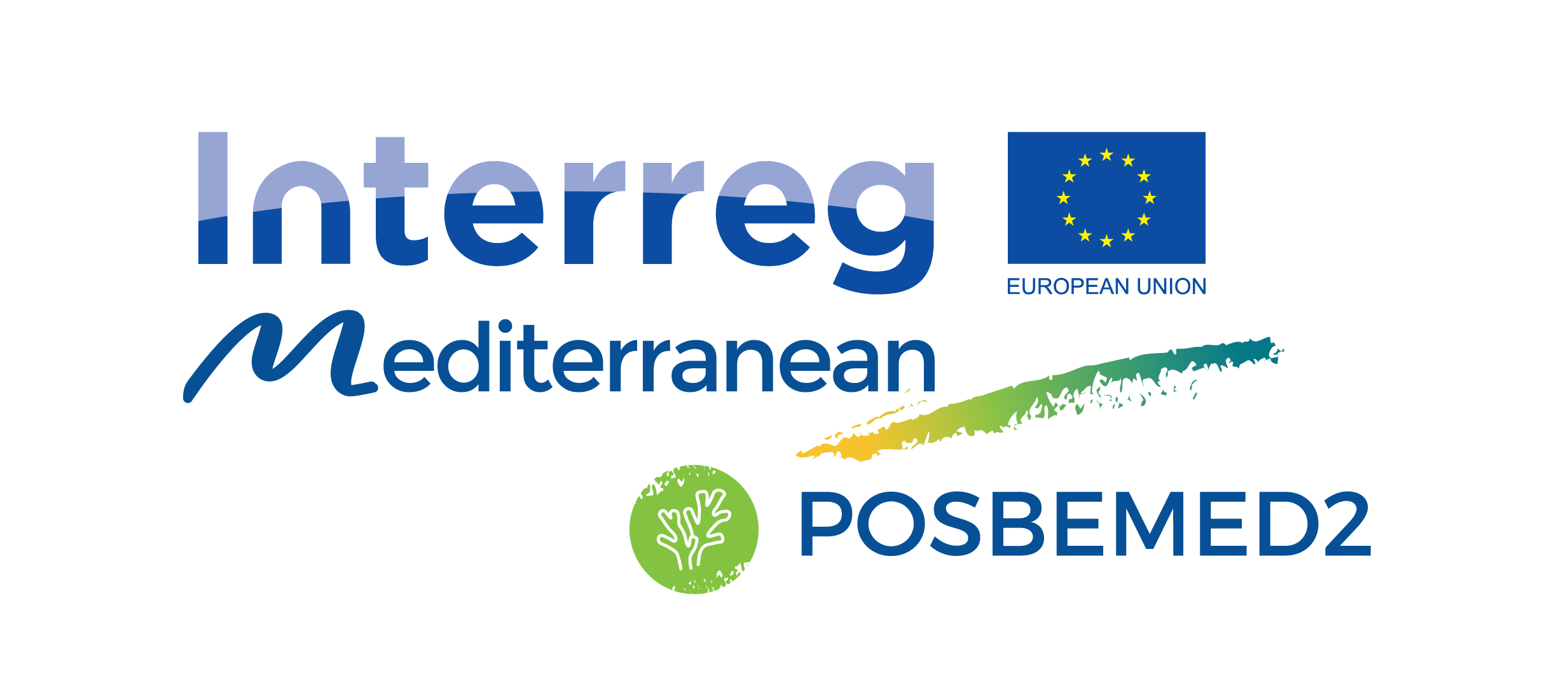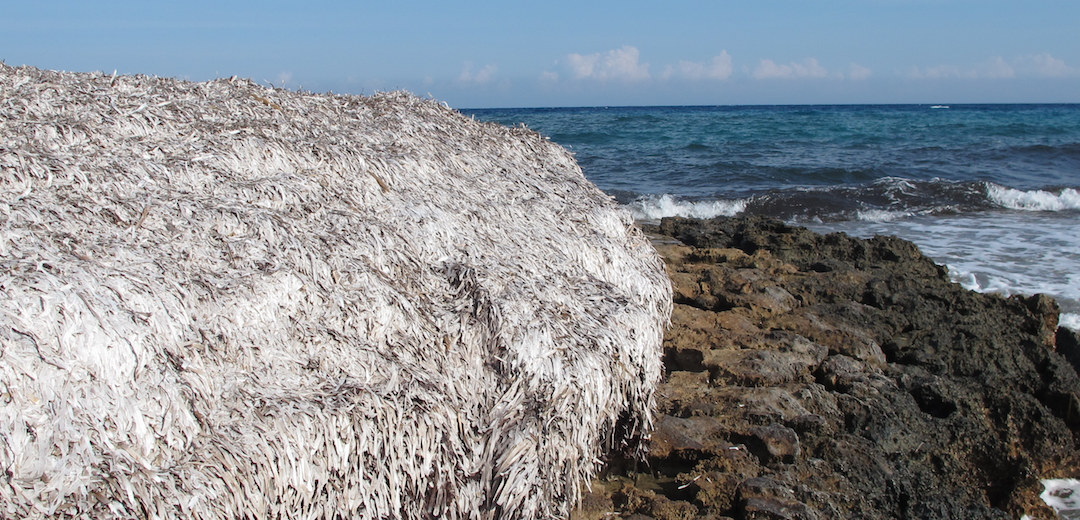POSBEMED2
What are they really, the so-called “phytzia” (as locals call them) present at many beaches of Cyprus?
In fact, they are not phykia (algae in Greek), and for sure they are not waste! They are actually leaves of the endemic to Mediterranean, marine plant, Posidonia oceanica. Posidonia forms large underwater meadows, which are very important for the sustainability of Cyprus’ marine biodiversity, as they offer food and refuge, to many marine organisms.
The washed ashore leaves, form along the coasts the common sight of leaf litters, or more precise the Posidonia banquettes. These banquettes are mixed with sand, forming natural wave barriers, thus reducing the coastal erosion, while at the same time support the formation of new habitats and nutrient resources.
A previous project (POSBEMED), came to conclusion that there is a misconception among citizens from many member states of E.U. and even from their national authorities, about the origin and aesthetical quality of such habitats. The common practice around Mediterranean, is the mechanical removal of banquettes from the beaches, thus limiting all of the advantages mentioned above.
What is POSBEMED2?
In continuation of the project POSBEMED, POSBEMED2 aims to promote the sustainable development of protected areas, where Posidonia banquettes are present, in collaboration with local authorities. Moreover, the project aims to correctly inform the public and raise awareness, in relation to the benefits that Posidonia banquettes have to offer. This is a multi-national (France, Italy, Croatia, Greece and Cyprus) project, where in Cyprus the administrator is Enalia Physis (Environmental Research Center), in collaboration with Larnaka Municipality and the Department of Environment.
The project started in November 2019 and it is going to be completed in June 2020. Its kick-off meeting took place in Cagliari (Sardinia) and also the first local meetings took place in Cyprus, among members of Enalia Physis, Larnaka Municipality and the Department of Environment.
Main objective
Based on the findings of the previous project, the objective of POSBEMED2 is to catalyse its results to manage the Mediterranean coastline by developing planning strategies that recognize the value of the Posidonia beach-dune environment and integrate them into the overall coastal strategy, while also addressing concerns and educating stakeholders. It further addresses key knowledge gaps, providing information that will enhance management decisions on adaptation, policies, planning and promotion in Protected Areas.
Objectives and Outcomes
The main objectives are:
1. Implement a local framework for decision making for Posidonia banquettes testing different approaches and tools
2. Increase awareness to build stakeholder support for more nature-oriented management strategies
3. Provide better integration planning tools to be incorporated into management planning and coastal policies
The main outcomes that partners with the support of associated partners agree to deliver are:
• Integrated and transferable methodology and toolbox for Posiconia beach management in protected areas (PAs)
• Set of policy recommendations and tools for integrated management of Posidonia littoral zone in protected areas.
• Joint Charter of Commitment for Mediterranean Municipalities
• Action framework plan for Posidonia coastal zone at 8 protected areas
• Transferability of knowledge and stakeholder engagement on good practices for PA’s effectiveness enhanced.
Partnership
This project is led by the Autonomous Region of Sardinia – Department of the Environment – Nature conservation and forestry policies Office (RAS, Italy), and involves 7 other partners from the Mediterranean basin: NATURA-JADERA public institution for management of protected areas in the County of Zadar (Croatia), the Institute for the Study of Anthropogenic Impact and Sustainability in the Marine Environment of the National Research Council (IAS – CNR, Italy), the IUCN Centre for Mediterranean Cooperation (IUCN-Med), the Regional Government of the Balearic Islands. Department of Environment and Territorio (CAIB, Spain), the Region of Central Macedonia (RCM, Greece), the Hellenic Society for the Protection of Nature (HSPN, Greece), the Enalia Physis Environmental Research Centre (Enalia, Cyprus), the Région Sud Provence-Alpes-Côte d’Azur (France)
As associate partners:
Municipalities
- Municipality of L´Alfàs del Pi (Spain)
- Municipality of Altea (Spain)
- Municipalty of Denia (Spain)
- Larnaka Municipality (Cyprus)
- Municipality of Sali (Croatia)
- Autonomous Region of Sardinia – Directorate General for Loca
- Authorities and Finance (Italy)
Tourism Agencies and Boards
- Tourist Board of Bozava (Croatia)
- Tourist board of municipality Sali (Croatia)
- Autonomous Region of Sardinia – Department of tourism, crafts and commerce (Italy)
Protected Areas Management Bodies
- National Agency of Protected Areas (Albania)
- Thermaikos Gulf Protected Areas Management Authority (Greece)
- Ministry of Agriculture, Rural Development and Environment (Cyprus)
- Office Environnement de la Corse – Service Espaces Protégés – Réserve naturelle des Bouches de Bonifacio (France)
- Management Board of Schinias-Marathon National Park, Mount Ymittos and Southeast Attica (Greece)
Other Coastal Management Bodies
- Direction Régionale de l’Environnement, de l’Aménagement et du Logement Provence-Alpes Côte d’Azur (DREAL-Région SUD)
- Public enterprise for coastal zone management of Montenegro
- Conference of Peripheral Maritime Regions (CPMR, France)
Other Interesting partners
- HOMEOTECH Co (Greece)
- Mediterranean Protected Areas Network (MedPAN)
- Foundation for Environmental Education (FEE, Denmark)
Budget
2,849,277 Euros (85% co-funded by the European Regional Development Fund)
For more information, please visit the project’s website:



Recent Comments